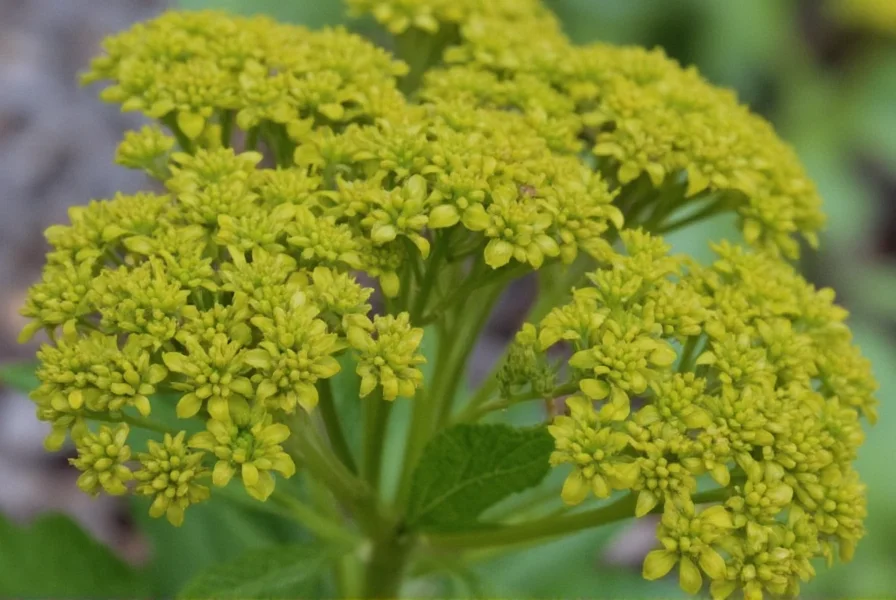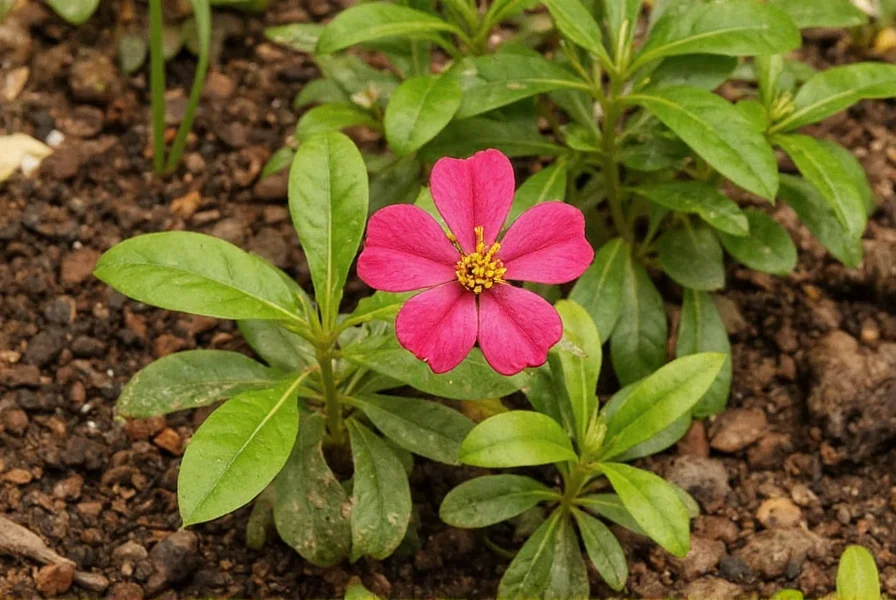Cinnamon Girl Distylium has rapidly gained popularity among landscapers and homeowners seeking reliable, low-maintenance evergreen shrubs. This Distylium hybrid, developed by Spring Meadow Nursery and introduced through the First Editions® collection, offers distinctive visual interest with its coppery-red new growth that matures to deep green. Unlike many traditional landscape shrubs, Cinnamon Girl Distylium provides year-round structure without demanding excessive care or water resources.
Distinctive Plant Characteristics
What sets Cinnamon Girl apart from other landscape shrubs is its remarkable combination of aesthetic appeal and practical benefits. The plant's most striking feature is its new growth, which emerges in vibrant cinnamon-red tones before gradually maturing to a rich, glossy green. This color transition creates visual depth in landscape plantings throughout the growing season. The small, leathery leaves maintain their color integrity even during periods of drought stress, unlike many competing shrub varieties that show visible signs of water deficiency.
Unlike its larger Distylium relatives, Cinnamon Girl maintains a naturally compact, mounded habit without requiring frequent pruning. This dwarf variety typically reaches 3-4 feet in height with a slightly wider 4-5 foot spread, making it ideal for smaller landscapes or as a mid-size component in layered planting designs. The plant produces inconspicuous red flowers in late winter to early spring, which provide early-season nectar for pollinators when few other plants are blooming.
| Characteristic | Details |
|---|---|
| Botanical Name | Distylium 'PIIDIST-II' |
| Mature Size | 3-4' H x 4-5' W |
| USDA Hardiness Zones | 7-10 |
| Light Requirements | Full sun to partial shade |
| Water Needs | Low once established |
| Soil Preferences | Well-drained, adaptable to various soil types |
| Growth Rate | Moderate (12-18 inches per year) |
Optimal Growing Conditions
Cinnamon Girl Distylium demonstrates impressive adaptability across various growing conditions, though it performs best with specific cultural practices. For optimal color development in the new growth, provide at least 6 hours of direct sunlight daily. While the plant tolerates partial shade, reduced light exposure may result in less vibrant new growth and a slightly more open growth habit.
Soil requirements are remarkably flexible—this shrub thrives in sandy, loamy, or clay soils as long as drainage is adequate. Unlike many popular landscape shrubs, Cinnamon Girl Distylium shows excellent tolerance to both acidic and slightly alkaline soil conditions. During the establishment period (first growing season), maintain consistent moisture, but once established, this plant demonstrates exceptional drought tolerance that makes it ideal for water-conscious landscapes.
Landscape Applications and Design Uses
The versatility of Cinnamon Girl Distylium makes it suitable for numerous landscape applications. Its compact size and naturally mounded form work well as foundation plantings where traditional boxwoods might require excessive maintenance. Landscape designers increasingly use this shrub as a replacement for invasive species like Japanese holly or non-native privets in southern landscapes.
Consider these effective landscape applications for cinnamon girl distylium care guide:
- As a low hedge or border planting (spacing plants 3-4 feet apart)
- Mass plantings for erosion control on slopes
- Container gardening for patios and entryways
- Water-wise gardens and xeriscaping projects
- Wildlife-friendly landscapes (provides cover for small birds)
When designing with Cinnamon Girl Distylium, contrast its textured foliage against plants with different leaf forms. Pairing with fine-textured grasses or broad-leaved hollies creates visual interest. The cinnamon-red new growth provides striking contrast against silver-foliaged plants like Dusty Miller or blue-toned conifers.
Maintenance Requirements
One of the most compelling advantages of cinnamon girl distylium landscape uses is its minimal maintenance requirements. Unlike many traditional landscape shrubs that demand frequent pruning to maintain shape, this variety requires little to no pruning to keep its attractive mounded form. If shaping becomes necessary, prune immediately after the spring growth flush to avoid removing potential flower buds.
Fertilization needs are modest—apply a slow-release, balanced fertilizer formulated for acid-loving plants in early spring. Over-fertilization can lead to excessive, weak growth that compromises the plant's natural shape and drought tolerance. For best results with your cinnamon girl distylium growth rate management, avoid heavy nitrogen applications that encourage rapid growth at the expense of plant hardiness.
Pest and Disease Resistance
Cinnamon Girl Distylium demonstrates excellent resistance to most common landscape pests and diseases, contributing significantly to its low-maintenance profile. Unlike boxwoods that suffer from boxwood blight or hollies prone to scale insects, this Distylium variety remains largely trouble-free throughout its lifespan.
Rare issues that may occasionally appear include:
- Mild spider mite infestations during extended drought periods
- Occasional leaf spot during prolonged wet weather
- Rare instances of root rot in poorly drained soils
These issues typically resolve without intervention when growing conditions improve. For organic gardeners seeking cinnamon girl distylium organic care methods, horticultural oil applications can address any minor pest concerns without harming beneficial insects.
Comparison to Similar Plants
When considering low maintenance evergreen shrubs for landscaping, Cinnamon Girl Distylium offers distinct advantages over comparable plants:
vs. Boxwood: Unlike boxwoods that require frequent pruning and face threats from boxwood blight, Cinnamon Girl maintains its shape naturally and shows no susceptibility to this devastating disease. It also demonstrates superior drought tolerance once established.
vs. Japanese Holly: While Japanese holly shares a similar size profile, it grows more slowly and lacks the distinctive seasonal color variation of Cinnamon Girl. Japanese holly also tends to develop more pest problems in southern climates.
vs. Other Distylium Varieties: Compared to larger Distylium varieties like 'Blue Cascade' or 'Vintage Jade,' Cinnamon Girl offers a more compact habit suitable for smaller landscapes. Its distinctive cinnamon-colored new growth sets it apart from other varieties with more uniform green foliage.
Seasonal Performance
Cinnamon Girl Distylium provides year-round interest in the landscape, with different seasonal highlights. In spring, the plant produces its most abundant new growth with the characteristic cinnamon-red coloration. Summer brings deep green foliage that withstands heat and drought conditions that would stress many other shrubs.
Fall and winter showcase the plant's evergreen nature, maintaining its structural form when many surrounding plants have gone dormant. The subtle red flowers that appear in late winter provide valuable early-season nectar for pollinators when few other food sources are available—a feature often overlooked in the cinnamon girl distylium benefits discussion.
Planting and Establishment Tips
For successful establishment of your cinnamon girl distylium planting guide, follow these best practices:
- Plant in spring or early fall to allow root development before temperature extremes
- Dig a planting hole twice as wide as the root ball but no deeper
- Amend heavy clay soils with organic matter to improve drainage
- Water thoroughly after planting and maintain consistent moisture for first growing season
- Apply 2-3 inches of organic mulch, keeping it away from the stem
The best time to plant cinnamon girl distylium aligns with mild temperature periods—avoid planting during summer heat waves or winter freezes. Proper establishment significantly impacts the plant's long-term health and reduces future maintenance needs.
Winter Hardiness Considerations
Cinnamon Girl Distylium demonstrates good cold tolerance within its recommended USDA zones 7-10. In zone 7 locations, some winter bronzing of foliage may occur during particularly cold periods, but the plant typically recovers fully in spring. Gardeners in the northern edge of its hardiness range should plant in protected locations and avoid late-season fertilization that might encourage tender growth before winter.
Unlike many southern-adapted plants that suffer in borderline climates, cinnamon girl distylium cold hardiness extends reliably to 0°F when properly sited. The plant's evergreen nature means it continues photosynthesizing during mild winter periods, contributing to its overall vigor.
Propagation and Availability
Cinnamon Girl Distylium is propagated vegetatively through cuttings to maintain its distinctive characteristics. This method ensures each plant exhibits the same desirable traits as the original selection. Due to plant patent protections (PP#28,095), only licensed growers may propagate this variety, which helps maintain quality control but may limit availability in some regions.
When purchasing, look for healthy plants with multiple stems, evenly distributed branching, and no signs of pest damage. Container-grown specimens typically establish more quickly than bare-root plants. For those researching where to buy cinnamon girl distylium, check with local nurseries specializing in native or adapted plants, as they often carry this variety.
Environmental Benefits
Beyond its aesthetic appeal, Cinnamon Girl Distylium contributes positively to sustainable landscapes. Its deep root system helps prevent soil erosion on slopes and banks. The plant's drought tolerance reduces water consumption compared to traditional landscape shrubs, making it an excellent choice for water-wise gardening.
The late winter flowers provide valuable early-season nectar for pollinators when few other plants are blooming—a benefit often overlooked in discussions about low maintenance evergreen shrubs for landscaping. The dense growth habit also provides shelter for small birds and beneficial insects throughout the year.
Long-Term Performance
Gardeners who have incorporated Cinnamon Girl Distylium into their landscapes report excellent long-term performance with minimal issues. Unlike some newer plant introductions that show problems after several years, this variety has demonstrated consistent reliability since its introduction. Mature specimens maintain their attractive form without becoming leggy or developing disease problems common in older landscape plantings.
For those concerned about cinnamon girl distylium growth rate over time, expect moderate growth of 12-18 inches per year until reaching its mature size, after which growth slows considerably. This predictable growth pattern makes it easier to plan long-term landscape designs without worrying about plants outgrowing their space.
Common Questions About Cinnamon Girl Distylium
How fast does Cinnamon Girl Distylium grow?
Cinnamon Girl Distylium has a moderate growth rate of approximately 12-18 inches per year during its establishment phase. Once it reaches its mature size of 3-4 feet in height, growth slows significantly. This predictable growth pattern makes it easier to incorporate into landscape designs without concerns about it quickly outgrowing its space.
Is Cinnamon Girl Distylium deer resistant?
Yes, Cinnamon Girl Distylium demonstrates excellent deer resistance, which is one of its valuable attributes for landscapes in areas with deer pressure. The plant's leathery leaves and dense growth habit make it unappealing to deer, unlike many other popular landscape shrubs that frequently suffer browsing damage.
Can Cinnamon Girl Distylium grow in full shade?
While Cinnamon Girl Distylium tolerates partial shade, it performs best with at least 6 hours of direct sunlight daily. In full shade conditions, the plant may become leggy, show reduced new growth coloration, and develop a more open growth habit. For optimal performance and the characteristic cinnamon-red new growth, provide morning sun with afternoon shade in hotter climates.
How often should I water established Cinnamon Girl Distylium?
Once established (after the first growing season), Cinnamon Girl Distylium requires minimal supplemental watering. During normal rainfall patterns, additional irrigation is unnecessary. In periods of extended drought (3+ weeks without significant rain), provide deep watering once every 2-3 weeks. Overwatering can lead to root issues, so always allow the soil to dry somewhat between waterings.
Does Cinnamon Girl Distylium require special soil conditions?
Cinnamon Girl Distylium is remarkably adaptable to various soil types, including sandy, loamy, and clay soils, as long as drainage is adequate. It tolerates both slightly acidic and mildly alkaline conditions. While it prefers well-drained soil, it shows better tolerance to occasional wet conditions than many other drought-tolerant shrubs. Amending heavy clay soils with organic matter can improve establishment success.












 浙公网安备
33010002000092号
浙公网安备
33010002000092号 浙B2-20120091-4
浙B2-20120091-4